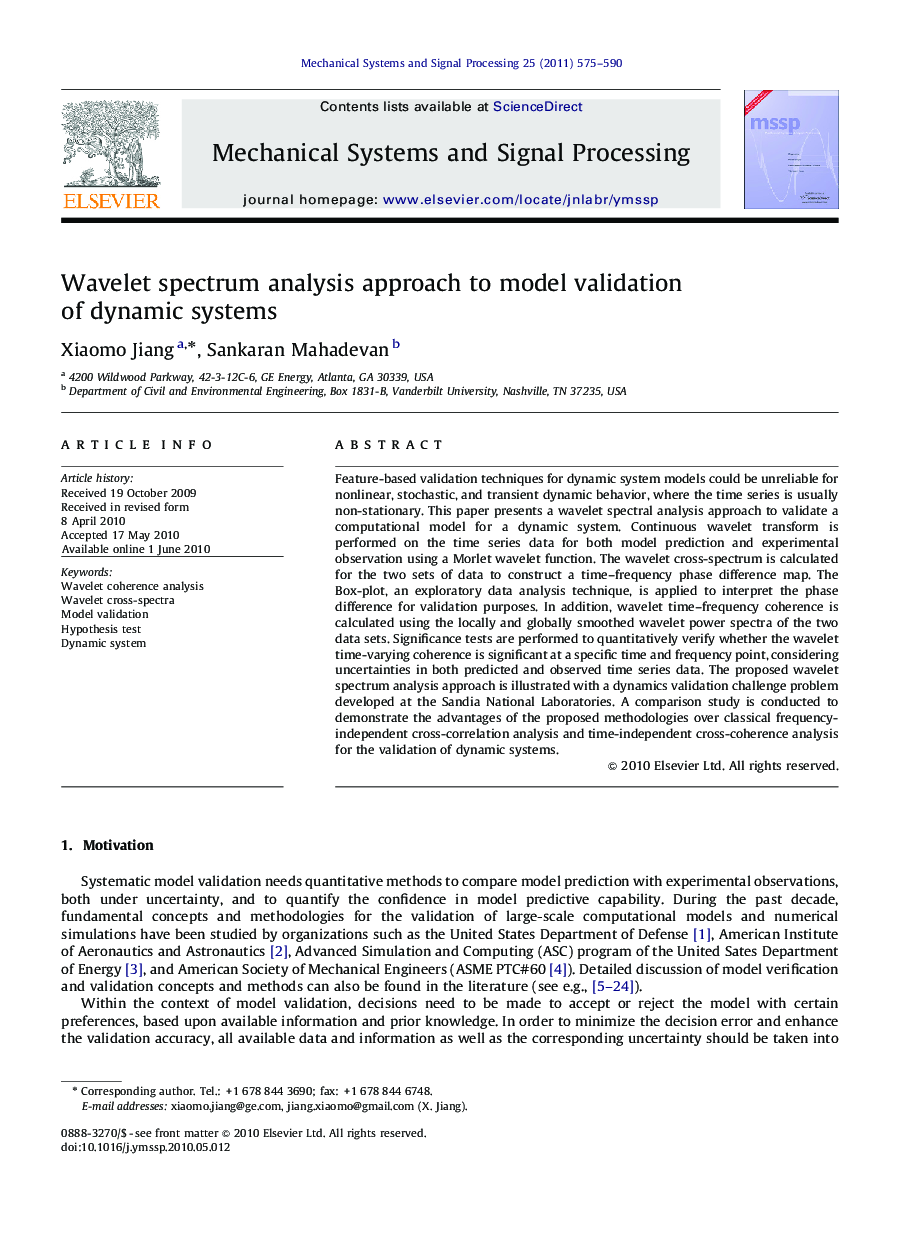| Article ID | Journal | Published Year | Pages | File Type |
|---|---|---|---|---|
| 565617 | Mechanical Systems and Signal Processing | 2011 | 16 Pages |
Feature-based validation techniques for dynamic system models could be unreliable for nonlinear, stochastic, and transient dynamic behavior, where the time series is usually non-stationary. This paper presents a wavelet spectral analysis approach to validate a computational model for a dynamic system. Continuous wavelet transform is performed on the time series data for both model prediction and experimental observation using a Morlet wavelet function. The wavelet cross-spectrum is calculated for the two sets of data to construct a time–frequency phase difference map. The Box-plot, an exploratory data analysis technique, is applied to interpret the phase difference for validation purposes. In addition, wavelet time–frequency coherence is calculated using the locally and globally smoothed wavelet power spectra of the two data sets. Significance tests are performed to quantitatively verify whether the wavelet time-varying coherence is significant at a specific time and frequency point, considering uncertainties in both predicted and observed time series data. The proposed wavelet spectrum analysis approach is illustrated with a dynamics validation challenge problem developed at the Sandia National Laboratories. A comparison study is conducted to demonstrate the advantages of the proposed methodologies over classical frequency-independent cross-correlation analysis and time-independent cross-coherence analysis for the validation of dynamic systems.
